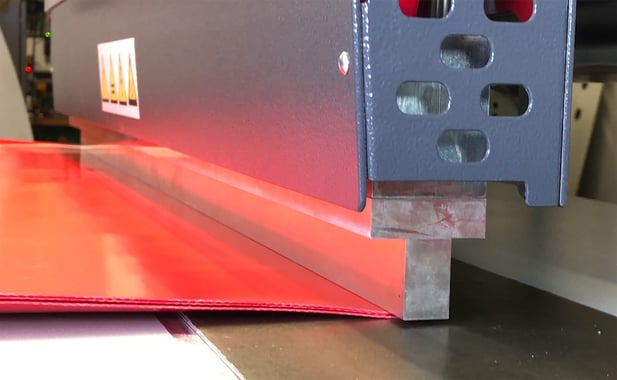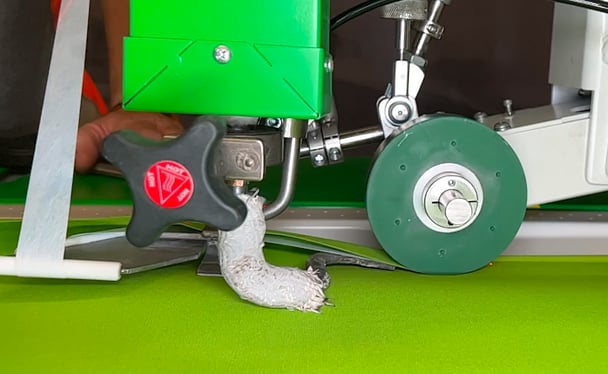In the ever-evolving world of manufacturing and design, the art and science of joining materials together have become a cornerstone of innovation and efficiency. Enter textile welding, a process that stands out for its ability to seamlessly bond fabrics and thermoplastics without the traditional need for stitching, adhesives, or fasteners. This guide is your comprehensive resource for everything related to textile welding, from foundational knowledge and techniques to insights on selecting and maintaining your welding machines. Whether you're a seasoned professional looking to refine your skills or a newcomer eager to dive into the world of textile welding, this guide has something for you. For those looking for an in-depth machine overview, Weldmaster’s Machine Overview is an excellent resource.
Foundations of Textile Welding
Textile welding is a field that bridges the gap between traditional craftsmanship and modern technology, offering innovative solutions to the challenges of material bonding. Unlike conventional welding, which typically involves metals, textile welding applies to a variety of thermoplastic films and fabrics, leveraging techniques that generate heat and pressure to create strong, durable bonds.
What is Textile Welding?
At its core, textile welding is the process of joining thermoplastic materials together through the application of heat, speed, pressure, and sometimes ultrasonic vibrations or electromagnetic energy. This process distinguishes itself from traditional metal welding by its versatility and the wide range of applications it supports, from automotive airbags and medical bags to inflatable products and industrial curtains.
The History and Evolution of Textile Welding
The history of textile welding is a testament to human ingenuity, tracing back to early efforts to waterproof clothing and gear. With advancements in technology, particularly in heat sealing and ultrasonic energy, the capabilities of textile welding have expanded dramatically, opening new doors for manufacturing efficiency and product innovation.
Diving into Textile Welding Techniques
The technique is at the heart of textile welding, with each method offering unique advantages and considerations. Understanding these can significantly impact the quality, strength, and appearance of the final product.
Heat and Ultrasonic Welding Explained
Heat welding uses controlled heat to melt the material, while pressure is applied to fuse the pieces together. Ultrasonic welding, on the other hand, utilizes high-frequency ultrasonic acoustic vibrations to create heat through friction, bonding materials at a molecular level. Both methods are valued for their efficiency and the strong, seamless bonds they produce.
Exploring Advanced Welding: RF Welding
Laser welding and Radio Frequency (RF) welding represent the cutting edge of textile welding technology. RF welding, utilizing electromagnetic energy, is renowned for its ability to produce strong, uniform bonds across large areas, making it suitable for high-volume production.

Mastering Textile Welding Machines
Behind every great welding technique is the machine that makes it possible. Understanding and selecting the right welding machine is crucial for achieving optimal results. From technology to material and applications; there are so many variable to choosing the right machine. By taking our 3-minute Super Selector quiz, you can find the right machine to match your need!
Choosing the Right Welding Machine
Selecting the right machine involves understanding your project's specific needs — considering factors like the type of material, the desired strength of the bond, and the scale of production. Key features to look for include adjustable temperature controls, pressure settings, and compatibility with various materials.
Maintenance and Operational Safety
Proper maintenance is essential for the longevity and optimal performance of welding machines. Routine checks, timely repairs, and adherence to safety guidelines not only prolong the life of your equipment but also ensure a safe working environment. This includes regular cleaning, checking for wear and tear, and following manufacturer’s guidelines for operation and maintenance.
Practical Skills in Textile Welding
Success in textile welding also depends on the skill and knowledge of the operator. From material preparation to the welding process itself, mastering the nuances of technique can make a significant difference. Gone are the days of the need for skilled laborers. Miller Weldmaster technicians can have your exisiting operators trained and running in a day.
Effective Preparation and Welding Processes
Effective preparation is crucial for achieving a strong, durable weld. This includes cleaning the material surfaces, selecting appropriate additives or coatings if needed, and ensuring that the materials are properly aligned before welding.
Optimizing Your Welding Technique
Improving your welding technique involves not only practice but also a deep understanding of the materials you're working with and the specific capabilities of your welding machine. Tips for effective welding include maintaining consistent speed and pressure, adjusting temperature settings as needed, and regularly assessing weld quality for continuous improvement.

Taking Your Textile Welding Forward
As the textile welding field continues to evolve, staying informed about the latest techniques, technologies, and best practices is essential. This guide has laid the foundation, but the journey toward mastering textile welding is ongoing.
Summing Up Textile Welding Essentials
We've explored the essentials of textile welding, from its principles and techniques to the selection and maintenance of welding machines. Remember, the quality of your welds not only reflects your skill but also the attention to detail and care you put into your work.
Explore Further with Weldmaster
We encourage all readers to continue exploring the vast potential of textile welding. For more in-depth information, resources, or inquiries about specific welding solutions, reach out to Weldmaster. Whether you're looking to enhance your fabric welding process with dye sublimation or explore other advanced techniques, our range of machines and expertise are at your disposal. Ready to take your textile welding to the next level? Contact us today and let us help you achieve your goals.
This guide is just the beginning. Embrace the journey of continuous learning and innovation in the fascinating world of textile welding.

